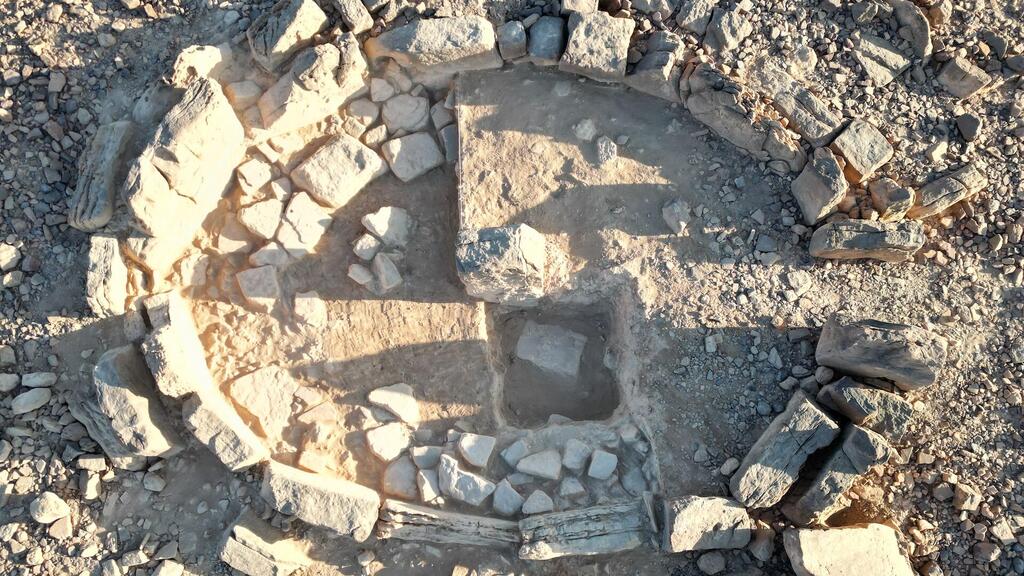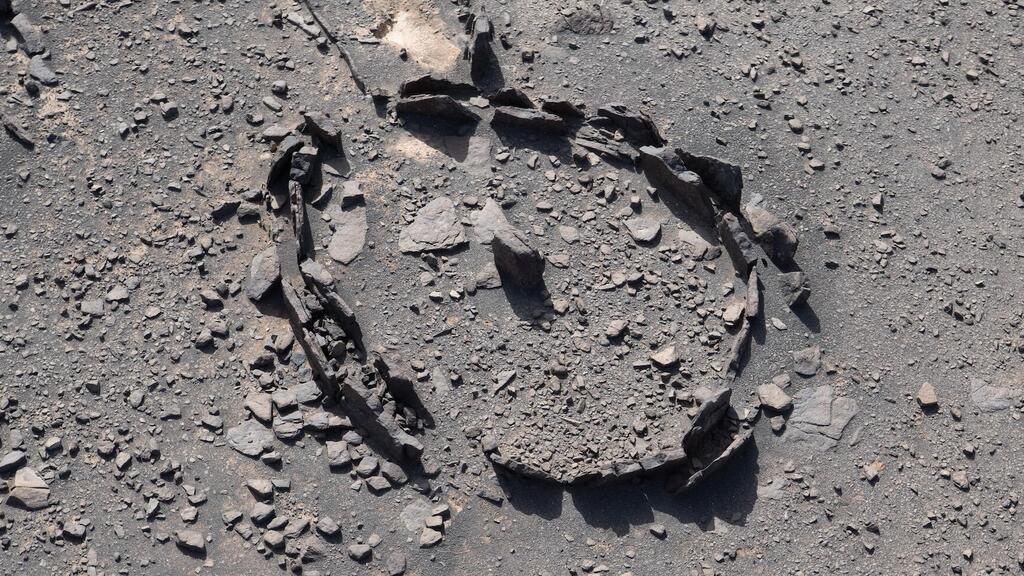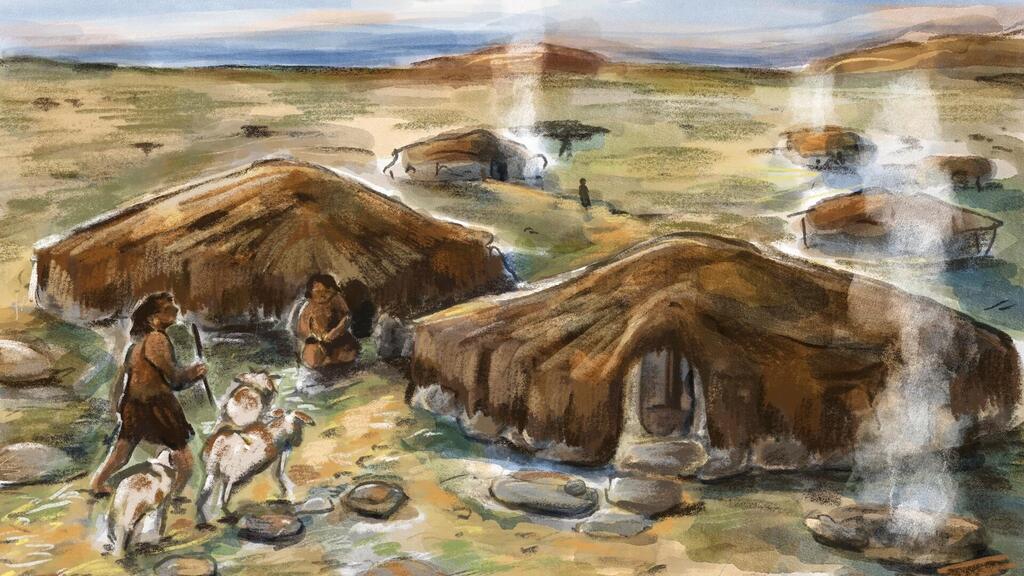Getting your Trinity Audio player ready...
Evidence of human community life from over 7,000 years ago has been discovered near AlUla in northwestern Saudi Arabia. The archeologists who discovered the eight ancient stone circles believe they were used as residential structures and were part of a larger discovery of 345 such circles identified via aerial surveys in the Medina region, located on the historic Incense Route.
The stone circles, which were the highlight of a study published in the Levant journal, range in diameter from 4 to 8 meters, with at least one vertical stone standing in their centers. According to the researchers' estimates, the ancient structures had at least one entrance and roofs made of either stone or organic materials.
3 View gallery


One of the stone circles in Saudi Arabia
(Photo: RCU/University of Western Australia/University of Sydney)
During excavations at the site, archaeologists found numerous stone tools made of basalt. In fact, five of the circles yielded nearly 225 kg of stone tools or other artifacts discovered within them, while also uncovering remains of sheep, goats, and cattle.
Among the findings were various shells, all originating from the Red Sea, located about 120 km west of the site. According to the researchers, the presence of these shells suggests the development of trade networks as well as evidence of advanced mobility.
The items found within the circles, combined with the similarity of the circles to ancient houses unearthed in excavations in Jordan, indicate that many, if not all, were used as dwellings.
3 View gallery


Aerial photo of stone circle
(Photo: RCU/University of Western Australia/University of Sydney)
"Globally, early domestic architecture was always round, and rectangular houses only appear in the later Neolithic," Jane McMahon from the University of Western Australia and a member of the research team, told Live Science.
When these vertical stone circles were in use, another form of stone structure known today as mustatil (Arabic for rectangle) dating to the late Neolithic period was also built and used for ritual purposes (such as animal sacrifices).
According to researchers, the use of mustatil and vertical stone circles suggests that both types of megalithic structures likely belonged to the same cultural group.
3 View gallery


Suggested reconstruction of the structures
(Illustration: Thalia Nitz, RCU/University of Western Australia/University of Sydney)
Gary Rollefson, Professor Emeritus of Anthropology at Whitman College and San Diego State University, who conducted extensive archaeological research in the area, said the people who built the vertical stone circles and mustatil structures were descendants of people who lived in Jordan and Syria about 500 years earlier.
He noted the circles’ architecture was similar to that of structures found in Jordan, which are about 500 years older, with their builders also herding sheep, goats, and cattle. The development of new hunting techniques, such as the "desert kite" — a stone structure used for mass hunting of wild animal herds common in the Levant deserts — significantly increased food supply, leading to population growth.
" They were building up a large population in eastern Jordan and [parts of] Syria," Rollefson told Live Science. "And they needed to find new hunting grounds, which would have led them to gradually go south, into what is now Saudi Arabia.”

